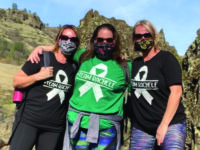Have you heard the term ‘baby-friendly’ hospital? Maybe you have seen the billboards around town which advertise that Enloe Hospital is baby friendly. Feather River, more recently, acquired the same status. But what does this term mean? Aren’t all hospitals baby friendly?
Although many hospitals are friendly to babies, in order for a hospital to declare itself a “baby friendly hospital,” specific criteria must be met, including not accepting samples of formula, and making sure all nursing staff are trained in how to help a mother succeed at breastfeeding. Most of the requirements that come with the baby friendly label have to do with breastfeeding. There are only a few hundred hospitals and birth centers in the country which have earned this title. We are extremely fortunate to have two of them surrounding us in our community!
Specific hospitals can be deemed baby friendly, but did you know that they can also be designated “mother friendly?” Two separate organizations give these designations. The Baby Friendly Hospital Initiative was started, in part, by the World Health Organization (WHO), while the Mother Friendly Childbirth Initiative is backed by the Coalition for Improving Maternity Services, a group of many individuals and organizations.
What makes a hospital mother friendly? Just as there are ten steps which must be completed in order to earn the baby friendly label, there are also ten steps to fulfill for a hospital, or birth center, to be mother friendly.
To be designated Mother Friendly, hospitals must:
Offer all birthing 1. mothers:
Unrestricted access • to birth companions including fathers, partners, children, family members, and friends
Unrestricted access • to continuous emotional and physical support from a skilled woman—for example, a doula
Access to • professional midwifery care
Provide accurate 2. descriptive and statistical information to the public about its practices and procedures for birth care, including measures of interventions and outcomes.
Provide culturally 3. competent care—that is, care that is sensitive and responsive to the specific beliefs, values, and customs of the mother’s ethnicity and religion.
Provide the birthing 4. woman with the freedom to walk, move about, and assume the positions of her choice during labor and birth (unless restriction is specifically required to correct a complication), and discourages the use of the lithotomy (flat on back) position.
Have clearly 5. defined policies and procedures for:
Collaborating • and consulting throughout the perinatal period with other maternity services, including communicating with the original caregiver when transfer from one birth site to another is necessary
Linking the • mother and baby to appropriate community resources, including prenatal and breastfeeding support
Not routinely 6. employ practices and procedures that are unsupported by scientific evidence, including, but not limited to the following: shaving, enemas, IVs, withholding nourishment or water, early rupture of membranes, electronic fetal monitoring. Other interventions are limited as follows:
Has an induction • rate of 10% or less
Has an episiotomy • rate of 20% or less with a goal of 5% or less
Has a total cesarean • rate of 10% or less in community hospitals, and 15% or less in tertiary care (high-risk) hospitals
Has a VBAC • (vaginal birth after cesarean) rate of 60% or more with a goal of 75% or more.
Educates staff in 7. non-drug methods of pain relief, and does not promote the use of analgesic or anesthetic drugs not specifically required to correct a complication.
Encourages all 8. mothers and families, including those with sick or premature newborns or infants with congenital problems, to touch, hold, breastfeed, and care for their babies to the extent compatible with their conditions.
Discourages 9. non religious circumcision of the newborn.
Strives to achieve 10. the WHO-UNICEF “Ten Steps of the Baby-Friendly Hospital Initiative” to promote successful breast-feeding.
There are very few US hospitals that have obtained this status. They are more common in the UK and Australia. If you look carefully at what it would take, I am not sure it is even a possibility in our area; it may not even be considered desirable to many or most; but information is the first step and it is worth a second thought. Who knows? Maybe in the future, “Mother Friendly” hospital advertisements will be on the billboards, too.
For more information, visit:
www.motherfriendly.org
www.babyfriendlyusa.org.
Chico Doula Circle
530-518-0421
www.chicodoulacircle.com.






